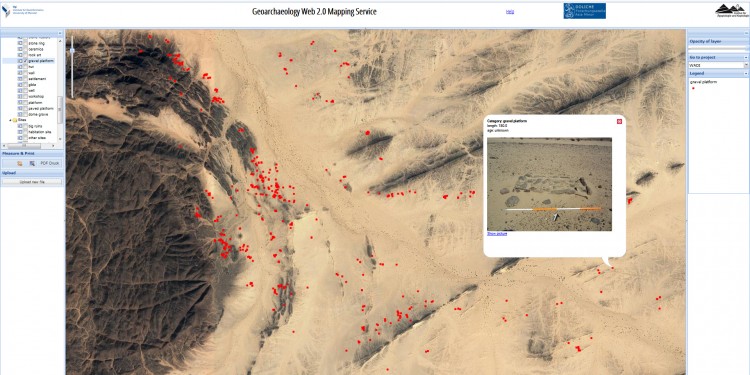
Münster University archaeologists post research data from Sudan online
Graves, small huts or stone-lined sleeping places from antiquity and the Middle Ages: the "Wadi Abu Dom Itinerary" archaeological project being undertaken at the University of Münster’s Institute of Egyptology and Coptology is now putting its data online, gathered between 2009 and 2016 during field research in Sudan. Academics, as well as anyone in the general public who is interested, can use a browser-based geoinformation system (WebGIS: http://wadi-abu-dom.de/web-gis-2/) to take a look at the findings.
"By providing free access to the data, our aim is not only to meet today’s expectations as regards making research transparent", explains project leader Prof. Angelika Lohwasser from the Institute of Egyptology and Coptology. "What we are also hoping for is a rapid and uncomplicated exchange of data." The WebGIS was developed in collaboration with the Institute of Geoinformatics and is currently also being used by Münster University archaeologists in the excavations at Doliche, in modern Turkey, which are being undertaken by the Asia Minor research unit.
A comprehensive field inspection, as well as aerial surveys of the riverbank areas of the dried-up Wadi Abu Dom river system in the Bayuda Desert in Sudan – rivers which only sporadically contain water – were all carried out as part of the "Wadi Abu Dom Itinerary" research project. In doing so, the team of twelve mapped all the structures of cultural and historical relevance visible on the surface of the terrain. All archaeological findings are shown as geospatial point data and area data in Web GIS and arranged by category. In addition, users can access further information for all the findings, and, in many cases, photos too.
Digital working methods were already playing an important role during the field research. The project team recorded the archaeological data while on the terrain, using small computers and a mobile GIS. This not only speeded up the work process, but also made scientific evaluation work easier.

The project was funded by the German Research Foundation and the Qatar Museums Authorities (Qatar-Sudan Archaeological Project).
